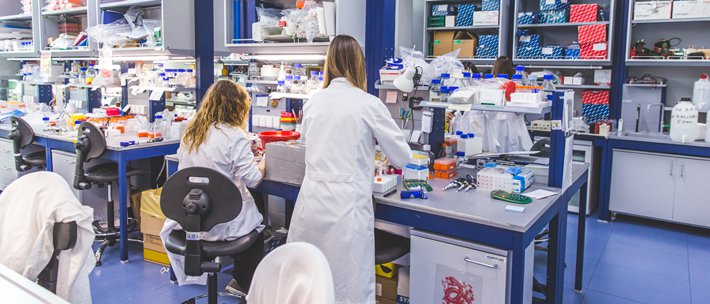A new molecular strategy is described for enhancement of muscle growth and for consequent containment of the adverse effects of degenerative diseases such as muscular dystrophy and atrophy, not to mention tissue loss consequent to ageing, trauma, or tumours.

The strategy is the subject of a research published in Nature Genetics* by the Dulbecco Telethon Institute group headed by Marco Sandri, conducted at the Biomedical Sciences department of the University of Padua and the Venetian Institute of Molecular Medicine (Vimm).The study – conducted in collaboration with the French team, led by Helge Amthor of the University of Versailles Saint-Quentin-en-Yvelines – sheds light on a problem which, for years, has puzzled scientists and pharmaceutical industries engaged in efforts to develop drugs capable of favouring muscle growth through the action of a hormone called myostatin.
"This molecule was discovered 16 years ago during a genetic study and observation of the cases of cows manifesting major, apparently spontaneous, muscular hypertrophy", explains Marco Sandri. "The analysis of their DNA confirmed that they presented a defect of gene encoding for myostatin, a hormone which has been shown to be capable of blocking muscle growth. The same phenomenon was then encountered not only in other animals, such as dogs and sheep, but also in humans. Hence, one need not be surprised that myostatin immediately aroused the interest of scientists and of a number of companies who foresaw an immediate therapeutic application in various fields. It was even thought that this hormone might be used in the field of sports as a doping substance. However, developments were less simple than was imagined".
Over the last few years, a number of clinical studies have been conducted, involving patients with dystrophy, to whom various myostatin inhibitors were administered, such as antibodies or soluble receptors capable of 'sequestering' the circulating hormone and neutralising its inhibitory action. It was hoped that this would lead to increased production of new muscle tissue, as observed in animals carrying this spontaneous genetic defect.
The results were, however, fairly disappointing. In all cases, treatment was found to be toxic, and the studies were interrupted ahead of time."This is because there was too much of a hurry to use myostatin clinically, before achieving a detailed knowledge of its final metabolic route," the Paduan researcher points out.
"The fact is, this hormone belongs to a vast family controlling not just muscle growth but also bone formation, cellular proliferation, metabolism, inflammatory response and fibrous tissue deposition: here lies the explanation for the important adverse effects noted during clinical studies, and furthermore, for the purposes of these studies, large dosages were required to obtain the desired effect. So, we wondered whether more in-depth study on a molecular level of the action of myostatin might not help us pinpoint better more specific molecular targets".
The Telethon researchers thus commenced their work. Following many mouse model experiments, they identified a new group of proteins, involved in the action of myostatin, known as Bone Morphogenetic Proteins (BMP), which are actually 'directors' or 'conductors', capable of regulating muscle growth (hypertrophy) and preventing excessive loss of muscular mass (cachexia)."Until recently it was thought that these proteins only controlled bone metabolism, as the name suggests", explains Roberta Sartori, the first author of the study and in charge of a large part of the tests performed.
"We discovered, instead, not only that some, such as BMP14/GDF5, are expressed in the muscles but also that they play an essential role in preventing muscle loss. These proteins are therefore molecular targets which are much more suitable and of interest for future ‘muscle-saver’ therapies, for use in cases of neuromuscular diseases of genetic origin, where muscle loss is the consequence of a hereditary defect, and also in cases of harm caused to the muscle as a result of a traumatic event or of ageing. While much work remains to be done we believe we have reached a key turning point within the myostatin field and that we have opened up an interesting avenuefor the development of new drugs".Sandri finally observes that "this study once more underscores the importance of basic research. Without in-depth knowledge of the molecular mechanisms underlying a disease, the right approach will not be easy to find. Instead, thanks to laboratory research, indications may be provided to our colleagues in the clinical medicine field as to the directions to be taken up to obtain the desired effect".